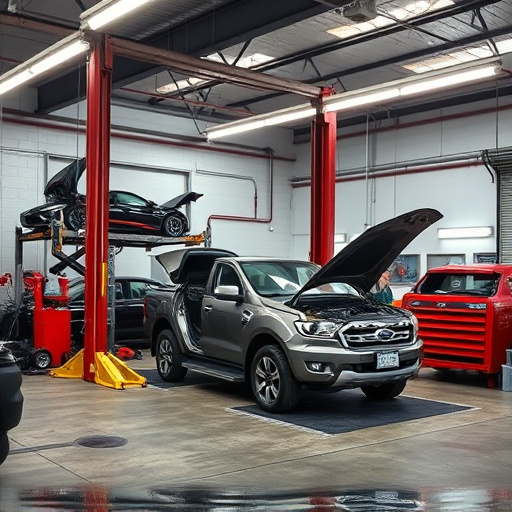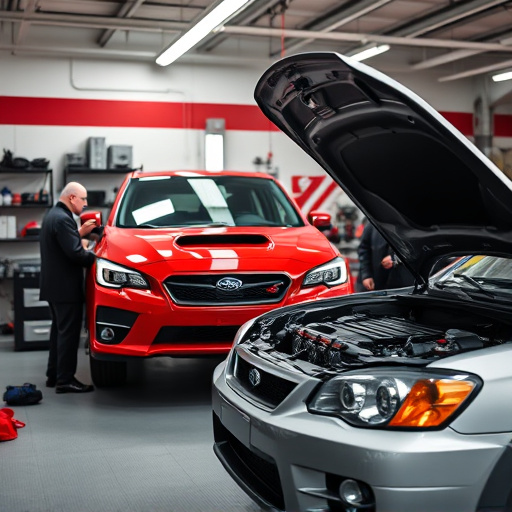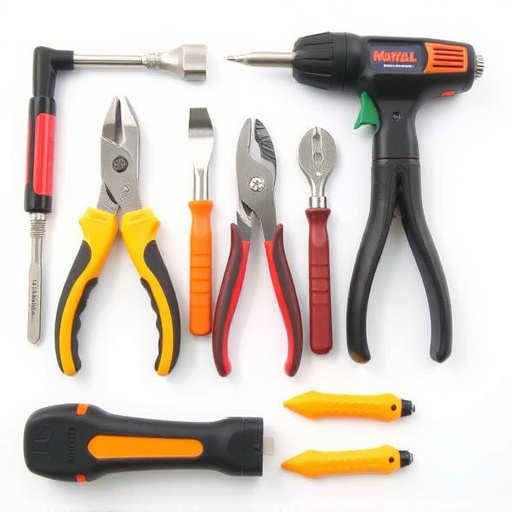Repair Expectations Management (REM) is crucial for collision repair centers to achieve high customer satisfaction through transparent communication about scope, timeline, and costs. In auto glass repair, REM involves educating customers about glass types and associated costs. Digital tools like dedicated websites and CRM software enhance updates, enable personalized services, efficient data management, and accurate repairs, such as fender work based on vehicle history. Effective two-way communication facilitates easier scheduling, real-time feedback, quick issue resolution, and ultimately, improved repair expectations management. Transparent communication, accurate estimating, and clear timelines build trust with clients, prevent misunderstandings, boost satisfaction, strengthen relationships, and enhance brand reputation, especially for specialized services.
In today’s competitive market, effective repair expectations management is pivotal for fostering customer satisfaction. This article delves into the essence of repair expectations management and explores how communication technologies can transform customer experiences. We’ll guide you through best practices in setting and managing repair expectations, ensuring transparency, timely updates, and proactive engagement. By implementing these strategies, businesses can enhance trust, reduce frustration, and build lasting relationships with their customers.
- Understanding Repair Expectations Management
- Communication Technologies for Enhanced Customer Experience
- Best Practices in Setting and Managing Repair Expectations
Understanding Repair Expectations Management

Repair Expectations Management (REM) is a critical aspect of any successful collision repair center or auto body services provider. It involves setting clear and realistic expectations with customers from the moment they bring their vehicle in for service. By doing so, businesses can ensure that customers understand the scope of work, potential timelines, and costs involved. This proactive approach fosters transparency and builds trust, which are essential for maintaining a positive customer experience.
In the realm of auto glass repair, REM goes beyond simply discussing repairs. It involves explaining the types of glass available, the benefits and drawbacks of each option, and how these choices might impact the overall cost. For instance, while standard auto glass replacement may be quicker and cheaper, high-end laminated glass could offer superior safety features and better noise cancellation, albeit at a higher price point. Effective REM ensures customers make informed decisions that align with their needs and budgets.
Communication Technologies for Enhanced Customer Experience

In today’s digital age, car repair shops have access to a plethora of communication technologies that can significantly enhance customer experience and improve repair expectations management. By leveraging online platforms, such as dedicated websites and social media channels, auto repair businesses can provide transparent updates on service progress, ensuring customers are well-informed throughout the entire process. This two-way communication allows for easier scheduling, real-time feedback, and quick resolution of concerns, fostering a sense of trust and satisfaction.
Furthermore, implementing customer relationship management (CRM) software enables car repair shops to offer personalized services tailored to individual needs. Through efficient data management, body shop services can be streamlined, with precise tracking of repairs, warranties, and customer preferences. For instance, when dealing with fender repairs, a well-organized CRM system can quickly access the vehicle’s history, ensuring accurate assessments and timely service, ultimately elevating the overall repair experience.
Best Practices in Setting and Managing Repair Expectations

Setting and managing repair expectations is a cornerstone of effective communication in any service industry, including automotive care. Best practices involve transparent and clear communication from the outset. Technicians or customer service representatives should provide accurate estimates and timelines for repairs, outlining each step involved to ensure clients understand the process. This includes discussing potential challenges and the range of possible outcomes, fostering trust and setting realistic expectations.
For instance, when dealing with car bodywork services, auto glass replacement, or automotive restoration, technicians can educate customers on the intricacies of the work. They might highlight factors that could impact turnaround time, such as parts availability or complexity of repairs. By involving clients in this process, businesses can avoid misunderstandings and ensure satisfaction, ultimately leading to stronger customer relationships and improved brand reputation through efficient repair expectations management.
Repair expectations management is a key aspect of providing an excellent customer experience, especially within the realm of after-sales service. By leveraging communication technologies, businesses can effectively set and manage customer expectations, ensuring timely repairs, accurate information dissemination, and increased satisfaction. Adopting best practices in repair expectations management not only enhances operational efficiency but also fosters strong customer relationships built on trust and transparency.













